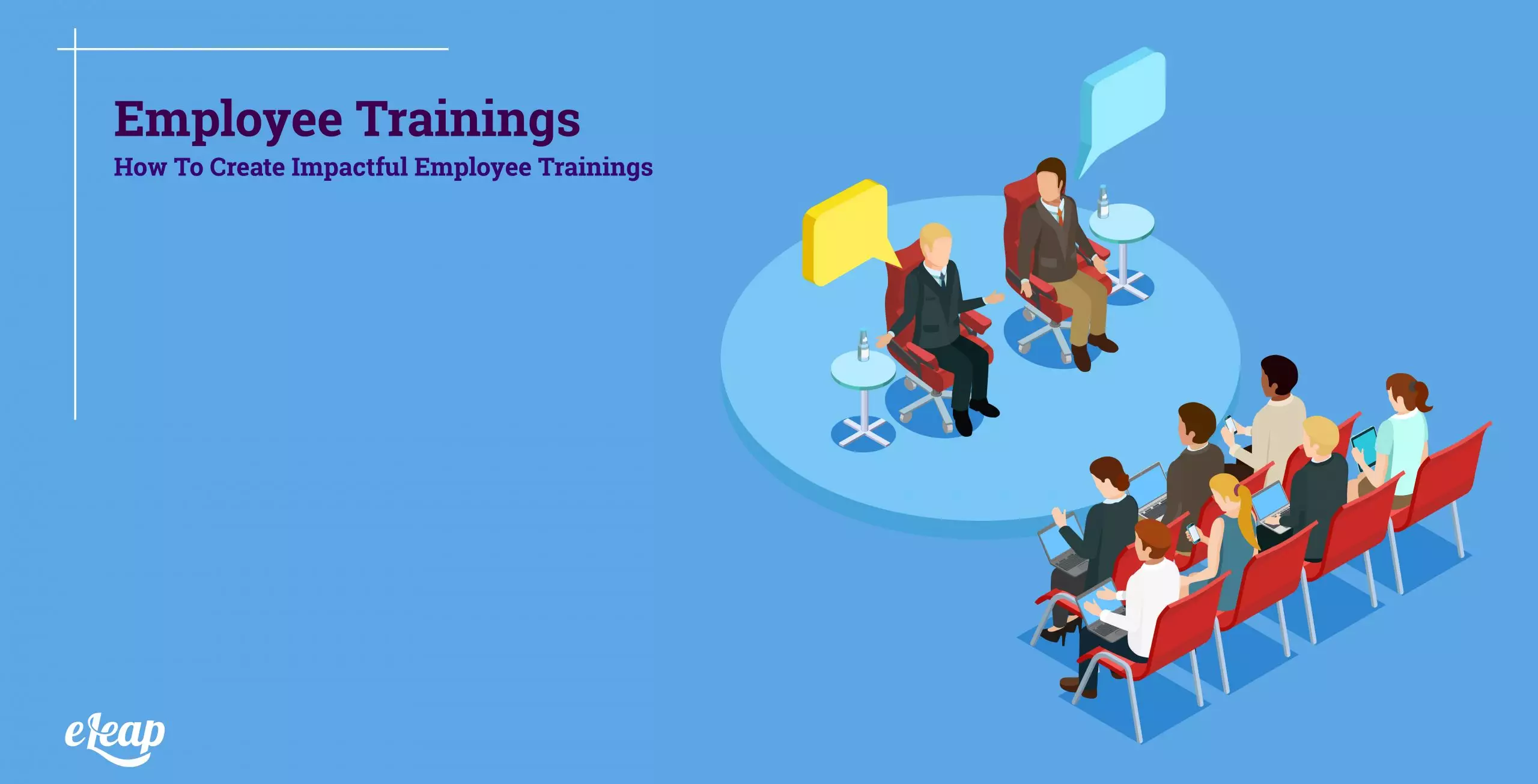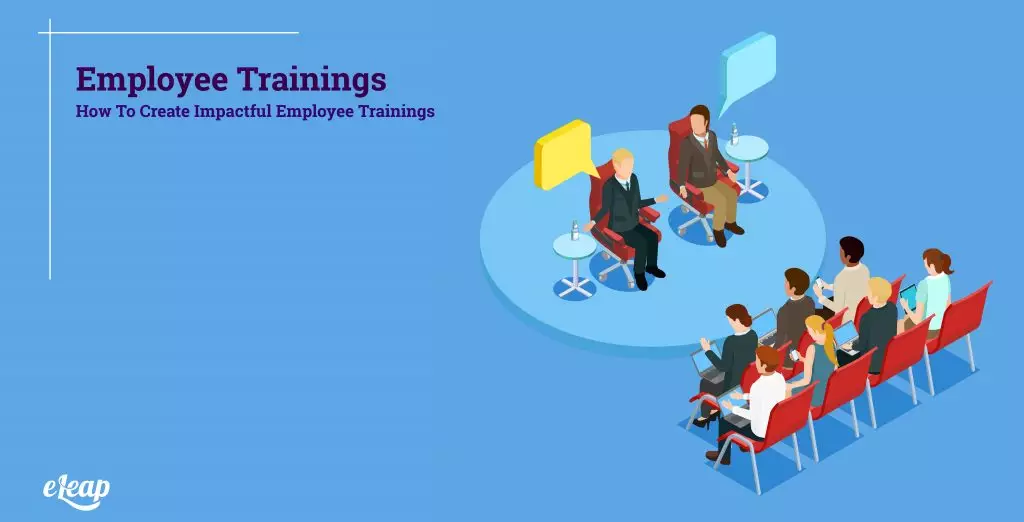Employee Trainings
How To Create Impactful Employee Trainings

Employee trainings are proven to boost workplace productivity, safety, morale, and motivation. In the short-term, these trainings help the individual grow in their own productivity and development, leading to better workers. In the long-term, training helps to build a sustainable talent pipeline and save money that comes from high turnover and ineffective workers.

The Importance of Employee Trainings
Deloitte’s principal and founder Josh Bersin, wrote: “There is a never-ending clamor of demand for training on technical topics, managerial skills, team leadership and project management, and company-specific systems and processes. Organizations have to seek out and buy technical programs to make sure that all professionals are both current and staying ahead in their domains.”
Employee trainings, simply put, enable workers to do their job effectively. But how do you create content that will reliably and steadily deliver success?
It stems from the five-step planning and alignment process of employee trainings:
1. Determine the impact and purpose.
When implementing a training program, it’s not enough to simply throw employees into generic skill-based or behavior-based trainings. This is a waste of time and money for the organization.
Instead, you must determine how each training program will affect each employee and, in turn, how that individual’s training will contribute to the overall mission and desired outcomes of the business.
What are your company’s goals? What role does each employee play to achieve the business’ goals? How will employee training influence these goals to make a sustainable and measurable impact?
2. Analyze skill gaps.
When you understand the skills your employees need to be successful, you then should learn where these skills are lacking. Find the gap between current skills and ideal skills for each employee or department. This will help to ascertain your specific learning objectives for the training program.
How are current employee behaviors and abilities meeting the goals of the company? How are they not? What types of training do they need to reach the level of “ideal skills”?
3. Create learning objectives.
Two major learning objectives need to be implemented in employee trainings:
Skills: What skills (whether technical or behavioral) does the employee need to master to do the job efficiently and proficiently? This will impact performance and productivity.
Reasoning: What do learners see as the reason to change these behaviors to perform their job better? Explaining this learning objective clearly can help change behaviors in the long-term.
Make sure that learning goals are clear to all parties. What skills do employees need to learn and why is it important to learn them? How does it impact their role with the organization now and in the future?
4. Determine the training methods.
You’ve determined the impact, skill gaps, and learning objectives of your proposed employee trainings. Now you need to figure out how to implement them.
Layered and blended learning approaches boost performance over time and ensure that the right people get the right training. This means that, firstly, the accounting department is not receiving the same employee trainings as the assembly line workers since their skills and learning objectives are different. This also means that within each employee training program, there are a variety of learning techniques and methods.
How will employee trainings vary between departments, between groupings, and even between individuals? How can you utilize different forms of content to best provide this information? How will you support the right training methods for your employees?
5. Analyze the results.
After the training is completed, it’s not complete. You must evaluate the effectiveness in both the short and long-term. Did employees feel they learned something new? Are they showing marked improvement in their skill gaps?
Continued support and employee trainings make new learning better. It helps to determine whether the initiative is on the right track or must pivot for better results according to the business’ goals and learning objectives.
The Importance of the Right LMS for Employee Trainings
The five-step process outlined above will help guide your efforts when it comes to creating training content. However, there is one piece of the puzzle we have yet to discuss – your learning management system. The right LMS is the foundation for not just content delivery, but course creation in the first place.
In the past, LMS platforms were static, dull, and tied directly to your in-house network and HR’s training computers. Today, that’s not the case. Advanced, web-based learning management systems allow you to achieve quite a few critical benefits, including the following:
- Content Creation: While you can use premade training videos and other content, a modern LMS provides you with the tools and capabilities necessary to author new, relevant, customized, branded content. This is the best way to ensure that it has the right impact, that it supports your determined purpose, and that it closes any skills gaps you identified previously.
- Content Delivery: Originally, LMS platforms were little more than content delivery systems. They still provide you with the means to deliver employee trainings, but today’s systems offer a broader range of options in terms of the format. For instance, in addition to text-based content, you can deliver videos, animations, and even games and quizzes to enhance learner engagement and bolster knowledge retention.
- Learner Evaluation, Monitoring, and Tracking: Without the ability to track, measure, and monitor the impact, you’re flying blind. A web-based LMS gives you the capabilities necessary to track employee progress, determine where they might be struggling, identify strengths, and more.
In Conclusion
Creating employee trainings that reliably and steadily deliver success is as simple as following the five-step plan outlined above. However, you must have the right learning management system in place first. Without a modern LMS, you’ll find your abilities limited at best and that your employees are unable to achieve the results that they deserve. Choose your platform with an eye toward ease of content creation, the types of content that can be delivered, and the available tracking, monitoring, and evaluation tools.